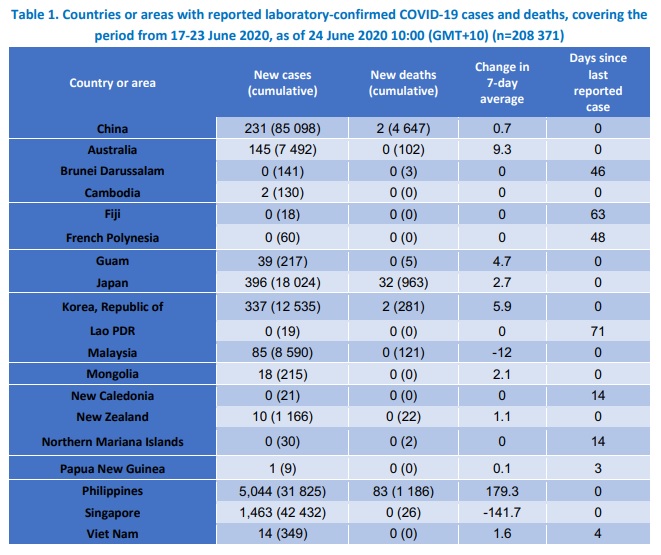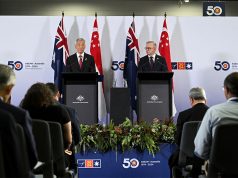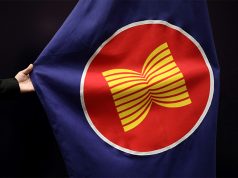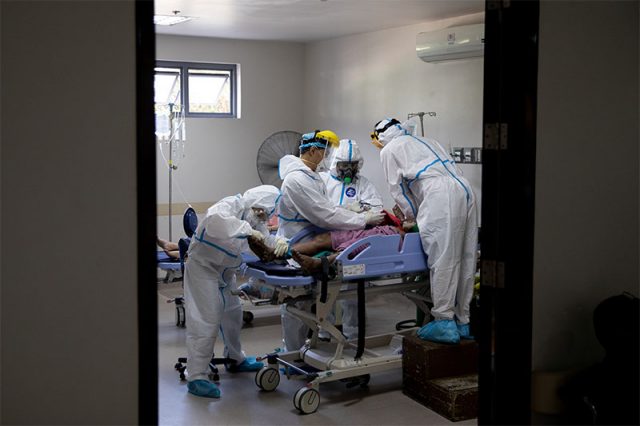
A science organization compared the spike of COVID-19 cases between the Philippines and Indonesia, two of the countries that have the highest total number of infections in Southeast Asia.
In an infographic posted on Tuesday, Earth Shaker showed a comparison of the novel coronavirus situations in Philippines and Indonesia as well as their ranks in the Association of Southeast Asian Nations.
The group lifted this information from the latest data provided by international data monitoring websites Worldometer and Our World in Data.
COMPARISON: Philippines and Indonesia Since there are calls to not compare Philippines with Singapore and consider the…
Posted by Earth Shaker on Monday, June 29, 2020
As of June 29, Indonesia has 55,092 novel coronavirus cases, which is the highest among the ten ASEAN member-states.
The Philippines, meanwhile, placed third with 36,438 cases.
However, the Philippines has the highest rate of active cases with 69.2%, death rate with 11, and the slowest recovery rate in the region with only 27.3% if per million of the country’s population was considered.
“Since there are calls to not compare the Philippines with Singapore and consider the population, here’s our situation with respect to Indonesia and ASEAN,” Earth Shaker said.
“Even if Indonesia has the highest number of confirmed cases among the 10 ASEAN Member Countries, if we will consider the population, we have the highest rate of Active Cases and Deaths per million and the lowest Recovery rate in the region,” the group added.
Earth Shaker was referring to Malacañang’s reaction to the latest World Health Organization report that the Philippines holds the fastest rate in the rise of COVID-19 cases in the Western Pacific. WHO gathered this data from June 17 to June 24.
In a virtual press briefing on June 29, presidential spokesperson Harry Roque questioned the report and perceived that WHO is comparing the country to Singapore despite the tally including figures from other countries in the region.
He based his comparison on the neighboring countries’ differences in population.
“Now, ang sabi ng WHO tayo daw ang pinakamabilis na tumaas na kaso sa buong Western Pacific Region. Totoo ba ho ito? We beg to disagree,” Roque said.
“Siyempre po kung titingnan natin iyong pagtaas ng kaso, dapat iyan in relation to your population. Bakit tayo ikukumpara sa Singapore eh ang Singapore limang milyon lang po iyan. Isang siyudad lang po iyan, hindi pa siyudad ng Quezon City o Manila,” he added.
Roque also used the same argument when reporters asked for his comment on New Zealand’s achievement of eliminating the deadly virus.
READ: Netizens jeer at Harry Roque’s comparison of Philippines with New Zealand’s zero COVID-19 case
He claimed that the government cannot replicate such a feat because the Philippines has more people in limited areas as compared to the residents of New Zealand.
The misleading graph presented to the media
To supposedly add proof, Roque showed a graph of the number of COVID-19 cases in countries across Asia during the virtual presser.
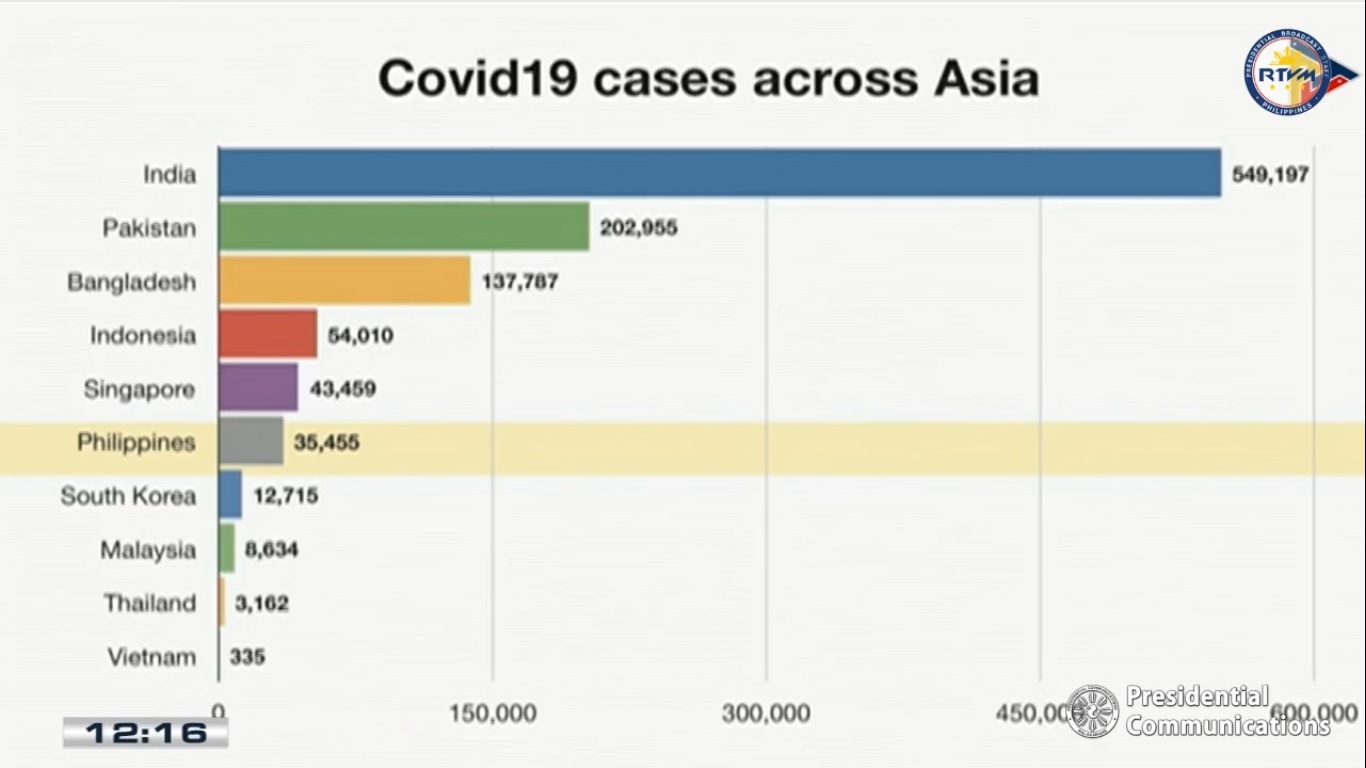
He claimed that this information was based on the population of the affected countries.
“So kung idi-divide ninyo po ang kaso per million population, malinaw po, hindi po magsisinungaling ang datos – hindi po tayo ang pinakamabilis na dumami ng kaso sa Western Pacific Region. Hahayaan na po namin ang datos sumagot doon sa report ng WHO,” Roque said.
In the data he presented, India ranked first for having the highest number of cases while the Philippines was only on the sixth spot.
However, the graph only represented the total number of COVID-19 cases throughout the pandemic, instead of the “increase rate.”
India, Pakistan and Bangladesh are also not part of the states that WHO identified as part of the Western Pacific region.
These errors were raised by Twitter user @dyaelgonzales on the microblogging platform.
“They keep trying to dismiss case numbers by using pop proportions, which doesn’t change the fact na marami paring cases,” the user noted.
Roque makes a bigger fool of himself by using this chart.
1) The top 3 countries, aren't Western Pacific.
2) The chart shows total cases, not case spikes.
3) They keep trying to dismiss case numbers by using pop proportions, which doesn't change the fact NA MARAMI PARING CASES. https://t.co/WI1Dd6pCbp— Ja #SOGIEEqualityNow 🏳️🌈 (@dyaelgonzales) June 29, 2020
The Department of Health also earlier explained why the situation in the Philippines should not be compared to other countries
“Our socio-economic context, particularly living conditions, as well as health system capacity, even prior to COVID, is different from Singapore. Please take that into account when we do our analysis. Let us not cherry-pick the countries we want to compare ourselves to,” Health Undersecretary Maria Rosario Vergeire said.
Rates compared to other countries
The WHO report from June 17 to June 24 showed that the Philippines recorded 5,044 new cases, which has an average of 179.3 for seven days.
The death toll is also the highest with 83 deaths within the period.
Singapore followed with 1,463 new cases and zero deaths.
